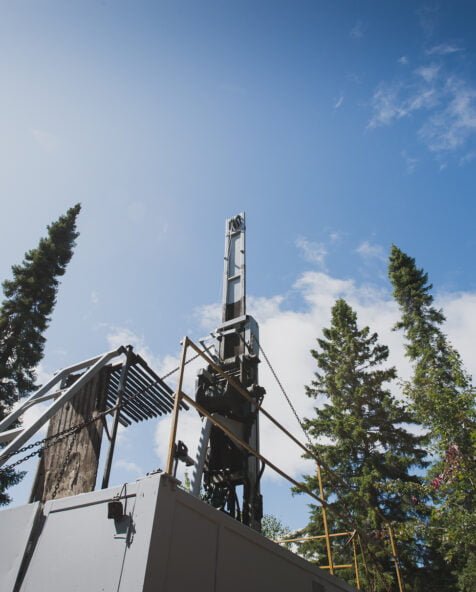
GOLD : $ 3436.63 US/ounce SILVER : $ 32.75 US/ounce
COPPER : $ 4.74 US/pound ZINC : $ 1.25 US/pound

GOLD : $ 3436.63 US/ounce SILVER : $ 32.75 US/ounce
COPPER : $ 4.74 US/pound ZINC : $ 1.25 US/pound
GOLD : $ 3436.63 US/ounce SILVER : $ 32.75 US/ounce
COPPER : $ 4.74 US/pound ZINC : $ 1.25 US/pound
Exploration
Noranda Mining Camp
Falco is one of the largest holders of mining titles in the province of Québec, with an extensive portfolio of properties in the Abitibi greenstone belt, in the Blake River Group (“BRG”). The BRG represents the youngest and most prolific assemblage of subalkaline volcanic rocks in the Abitibi greenstone belt, with 31 deposits of gold and base metals.
Falco owns approximately 67,000 hectares of land in the Noranda mining camp, which represents 67% of the camp as a whole. Falco’s main project is the Horne 5 Project located under the former Horne mine, which was operated from 1927 to 1976 and produced 11.6 million ounces of gold and 2.5 billion pounds of copper.
The Noranda mining camp is one of the best locations in the world for volcanogenic massive sulphide (“VMS”) exploration. It is included in the Abitibi greenstone belt which represents 375 Mt of accumulated base and precious metal ore for this belt.

Central Camp
The Noranda mining camp is home to the famous “sequence of mines” of the Central Camp. Falco owns approximately 70% of the mining titles in the Central Camp with 13 former mining sites for gold and base metals.
The Central Camp is bounded by the Hunter Creek fault to the north and the Horne Creek fault to the south and is bordered by the Flavrian plutons to the west and Dufault to the east. It consists of a succession of mafic to intermediate and sometimes felsic submarine volcanic flows.
The mineralization is mainly a volcanogenic massive sulfide (“VMS”) type, associated with levels of exhalites which testify to a pause in volcanism between the different stratigraphic units
Eastern Camp
The Eastern Camp is delimited to the west by the Alembert fault. It mainly comprises the Reneault-Dufresnoy formation, a volcaniclastite-rich mafic to intermediate volcanic sequence with extensive felsic centers. This formation hosts the VMS deposits of Mobrun and Bouchart-Hébert, further to the northwest. Several gold showings are present, including those of Anaconda Brass and Young Buck in the Noralex project.


Western Camp
The Western Camp is bounded to the east by the Flavrian Pluton and includes several gold mines (former Pierre Beauchemin and Quesabe) and base metal deposits (former Robb-Montbray). It mainly includes the Duprat-Montbray formation which represents the largest area in the Blake River Group. The geology is dominated by mafic rocks (basalts, basaltic andesites and andesites) of tholeiitic to transitional affinity. Despite the presence of many signs of VMS, this sector remains much less explored than the rest of the Noranda mining camp.